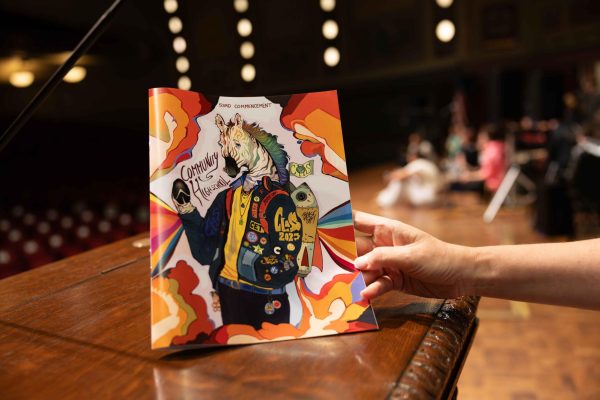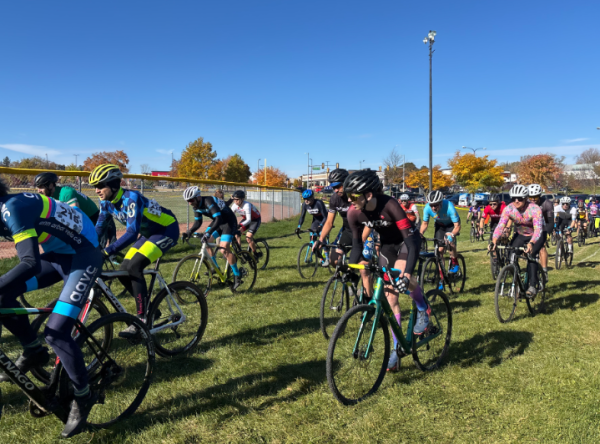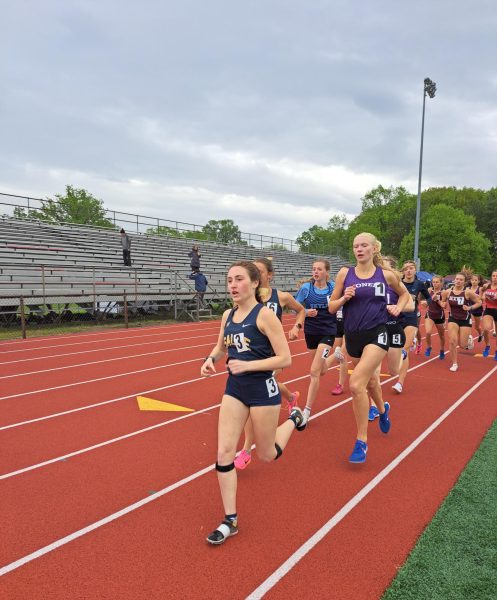a Path to the Future
Community High School students tour Ann Arbor taking a rare glimpse into the history of their town
Leaning against a brick wall shrouded in shade, Shirley Beckley stands in her big black sweater, a half circle of Community High School students gathered before her. Beckley is a guest speaker, teaching the students about African Americans in Lowertown as a part of their US History class. The variety of topics covered by the walking tour give students a deeper look into Ann Arbor history and its role throughout the years as the capital of Washtenaw County. The historical significance of the city often untaught in local classrooms, the city’s sometimes somber past almost unknown to younger generations.
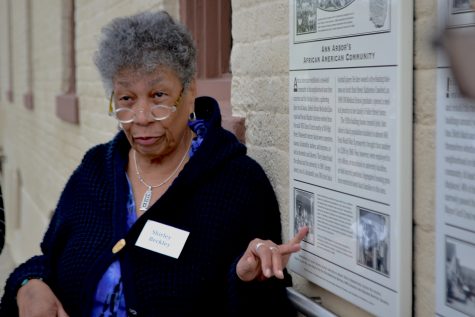
Led by Christine Crockett and Patrick Mccauley, two locals volunteering as guides, Tour Group Four winds its way around Kerrytown. The faction of students stop momentarily in front of Ann Arbor historical landmarks; a handful of these memorials to Ann Arbor’s rich past go back more than a hundred years. “The uses of these buildings have changed, but the buildings are still here,” Crockett said. “We can still talk about them: we can talk about the people who built them, the people who worked in them, the kinds of businesses they had, the communities they created, and you can imagine what it was like. But this wouldn’t happen without historic district laws.” With these laws, high school students like Andi Krawcke are able to relate class materials back to the real world. Ann Arbor’s historical significance not lost on Krawcke as she winds her way down Detroit street to hear locals Marley Deen and Shirley Beckley.
As an Ann Arborite herself, Krawcke enjoys learning about her hometown and, most importantly, about the people that used to live here. “Nobody really stays in one spot, a lot of different people come into different areas and change it and nothing really stays the same,” said Krawcke, reflecting upon what both Crockett and Mccauley seemed to emphasize throughout the tour. Beginning as a settlement in 1824, Ann Arbor has seen people of all backgrounds tramp through its streets, but as times have changed, some have been forgotten; Ann Arbor’s rich ethnic past of Irish, Polish and Chinese only vaguely known by students that study history in class. Their important role in the history of Ann Arbor is momentarily forgotten as we hunt for the shiniest penny, ripping down historical buildings in this hunt for expansion. Though we have started to move away from these almost predatory actions, these changes for the most part go unnoticed by the public. The history of the town rarely taught in classes, though teachers preach the common saying to “learn from the past.” As we move forward as a city, how can we expect to learn from the past when our rising generation knows little to none about it? How can we avoid the mistakes of those before us, if we do not even know them?
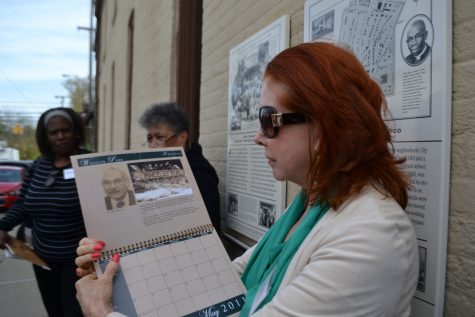
“We hear a lot about segregation in the South because it was institutionalized with laws, but here the segregation was a little softer but not necessarily less segregated; it still existed,” said Mccauley, bringing home a subject that for the most part many Ann Arbor locals are benighted of. “To them it was very liberal you could say,” said Deen when asked about how her parents viewed Ann Arbor. Considering ourselves a liberal town can many times make us forget that we still had a role in the appalling segregation that overtook our country for a near hundred years. “The segregation that did go on, even though it was quiet, we felt it,” said Beckley, remembering the unsaid separation that divided her from her white school friends as soon as they left the building. “We didn’t do anything together, like you all do things together with your friends and it wasn’t that we couldn’t. It was just a known thing that you just didn’t.” These examples of segregation occurring right on our own streets, but being passed over in classrooms for instances thousands of miles away. The geographical disconnect creating a distance between Ann Arbor students and the issue, creating a “them” and an “us.” These common text-book examples divert attention from the segregation that occurred in our own town, leaving it unconfronted and unacknowledged by many.
“When you ordered your hot fudge sundae, or any fudge sundae or any ice cream, the white customers would get theirs in a pretty glass container, but we would get ours in a white paper cup, because we couldn’t have the glass containers,” Beckley said.
“The only way you can hold on to this essence of what your community was from the very beginning is through historic preservation and historic district law,” Crockett said. Beyond this, there are the painful parts of our past; the parts that must be taught so as not to be repeated. As our community develops and Ann Arbor’s population increases every year, we need to teach our students more about our own town’s past. We need to acknowledge our mistakes, and together, move forward from there.




